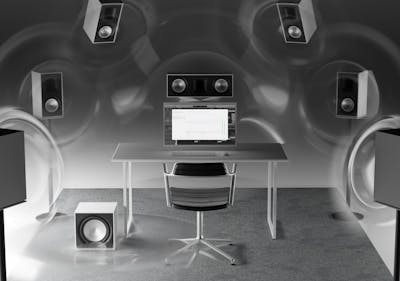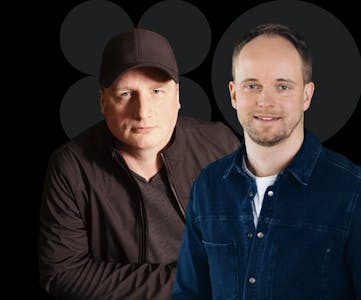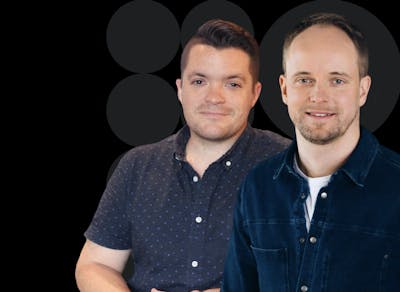October 24, 2018 — The concept of a large-scale commercial recording studio is a bit outdated. Back in the 60’s, 70s and 80s there was this idea that if you moved to a city with a proper music scene and invested your life savings in a luxury facility and enough analog equipment to fill it, eventually people would catch on and you’d get a chance to produce the next Beatles album.
The truth is, large format studios were built in an era when the music industry was generating enough revenue to sustain them. Artists were making so much money that labels could afford exorbitant hourly fees—everyone got a slice of the pie.
Today, with music sales at a historic low, iconic studios are closing left and right. Within the last five years The Hit Factory, Sound City and Olympic Studios have all closed their doors and been converted into condos or shopping malls.
It’s not all doom and gloom, though. With the fall of the recording studio comes the rise of the bedroom producer. As recording technology becomes increasingly affordable and accessible, more and more artists are cancelling their studio sessions to record at home. All you need is a laptop and a little bit of inspiration to create the next big hit.
The Benefits of Bedroom Studios
Bedroom studios don’t literally have to be in your bedroom—they can be in any small, non-commercial space. The idea is to convert a space that you already own or rent into a small, hyper-focused production space with only the essential elements. Not only does this save on real estate and insurance expenses, it also significantly reduces your overhead. Commercial studios have to cater to a wide variety of clients and fill their facilities with the latest and greatest equipment—but bedroom studios can operate almost entirely in-the-box.
In a commercial studio, time is money. Every hour is a bookable hour, so there’s pressure to get in and get out as quickly as possible. With a bedroom studio you have the freedom to develop your sound without hourly restrictions. Working in an intimate setting also allows you to make a more personal connection to your music. It can be incredibly awkward to try and deliver an emotional vocal performance in a commercial studio with a stranger on the other side of the glass—but recording in a bedroom studio feels right at home.
One of the best parts of working in a bedroom studio is you don’t have to invest in expensive studio monitors. Regardless of what you may read on some forums—it’s perfectly fine to mix on professional headphones. Open-back headphones tend to have more linear frequency response curves than their closed-back counterparts and are less fatiguing on the ears, which makes them a great choice for mixing.
Believe it or not, great records have been made with next to nothing. There’s an old saying often heard in recording studios:
“It’s not the gear, it’s the ears.”
Don’t believe me? Check out these five producers who made hit songs in their bedrooms.
Steve Lacy
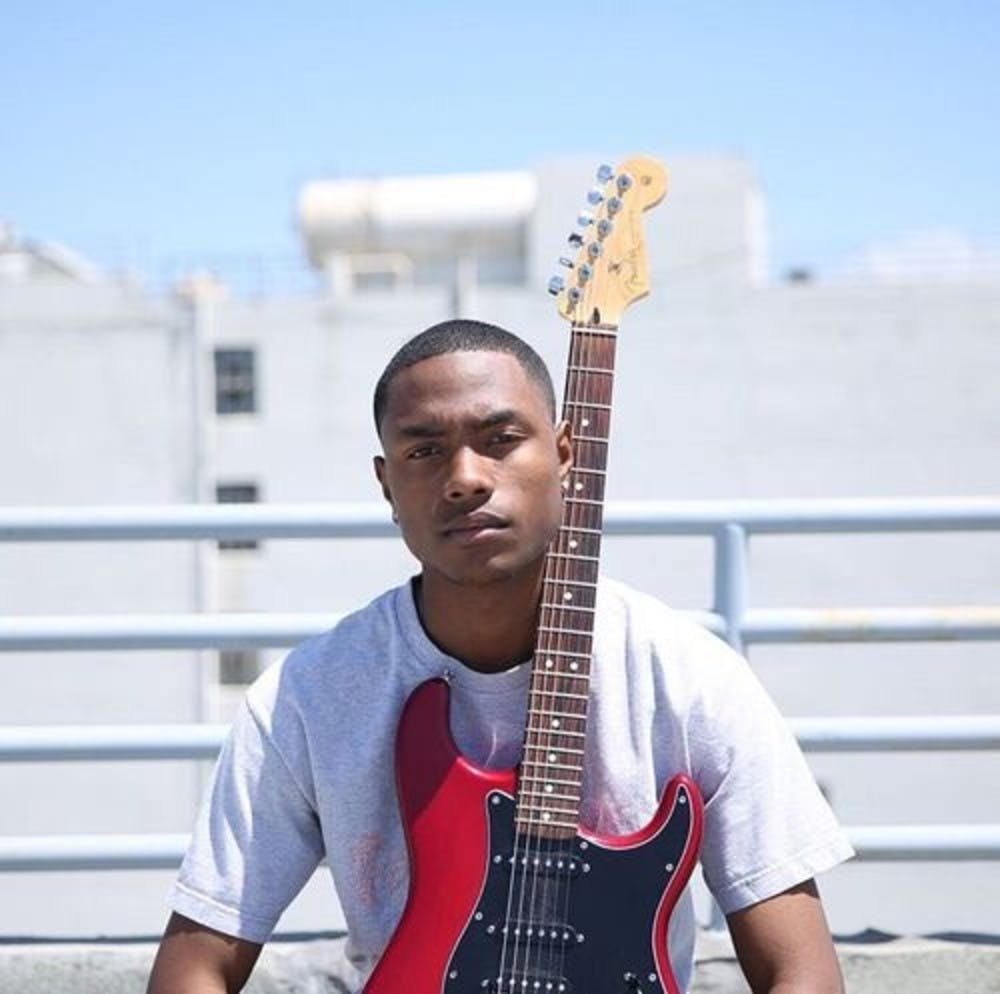
“I had my manager buy me this studio to only record using my iPhone. I’m in this studio with all this equipment just to write this song on my phone… I didn’t need what I thought I did.”
Biggest tracks:
- “Foldin Clothes”—J. Cole
- “PRIDE”—Kendrick Lamar
- “Jet Fuel”—Mac Miller
- “Roll (Burbank Funk)”—The Internet
Headphones: Beats by Dre, Audio-Technica ATH-M50
Monitors: iPhone built-in speaker
Software: GarageBand iOS app
Steve Lacy is an American Grammy award-winning singer-songwriter, multi-instrumentalist, audio engineer and producer. At just 18 years old, Lacy has worked with artists like J. Cole, Kendrick Lamar and Mac Miller. His rise to fame started in 2013 when he began producing The Internet’s third studio album, Ego Death at only 15 years old.
Lacy recently released his first personal project, Steve Lacy’s Demo, which features six tracks recorded entirely with his iPhone. Lacy used GarageBand to produce drum loops, iRig to record guitars and recorded vocals by singing directly into the iPhone mic while holding a pop filter in his hand. Lacy calls his approach the Bare Maximum:
Flume
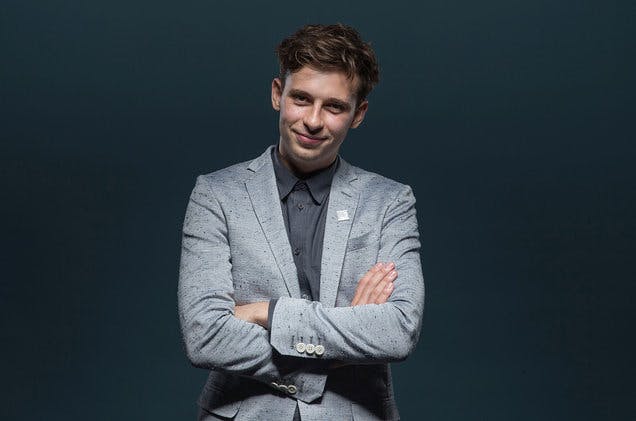
“I had my manager buy me this studio to only record using my iPhone. I’m in this studio with all this equipment just to write this song on my phone… I didn’t need what I thought I did.”
Biggest tracks:
- “Never Be Like You (feat. Kai)”
- “Say It (feat. Tove Lo)”
- “You & Me – Flume Remix”—Disclosure, Eliza Doolittle
Headphones: Sennheiser HD 600
Monitors: Event Opal, recently upgraded to Barefoot MicroMain 27
Software: Native Instruments Komplete, Spectrasonics Omnisphere
Flume is a double-platinum Australian producer, often credited as the pioneer of future bass. His self-titled debut album was released in 2012 and produced entirely on his laptop. The album debuted at #2 on the ARIA charts and reached number one on the Australian iTunes charts. His latest album, Skin, earned him several ARIA nominations after it was released in 2017.
Flume produces in his home studio with Ableton on his laptop. He uses Sennheiser HD 600 headphones, and while he recently upgraded to Barefoot Micromain 27, he mixed with KRK Rokit 8’s for years. Flume uses a Novation 25SL MIDI controller to control plug-ins like LennarDigital Sylenth1 and Native Instruments Komplete plug-ins. He also uses the highly portable Teenage Engineering OP-1 synth to produce on the go.
Skrillex
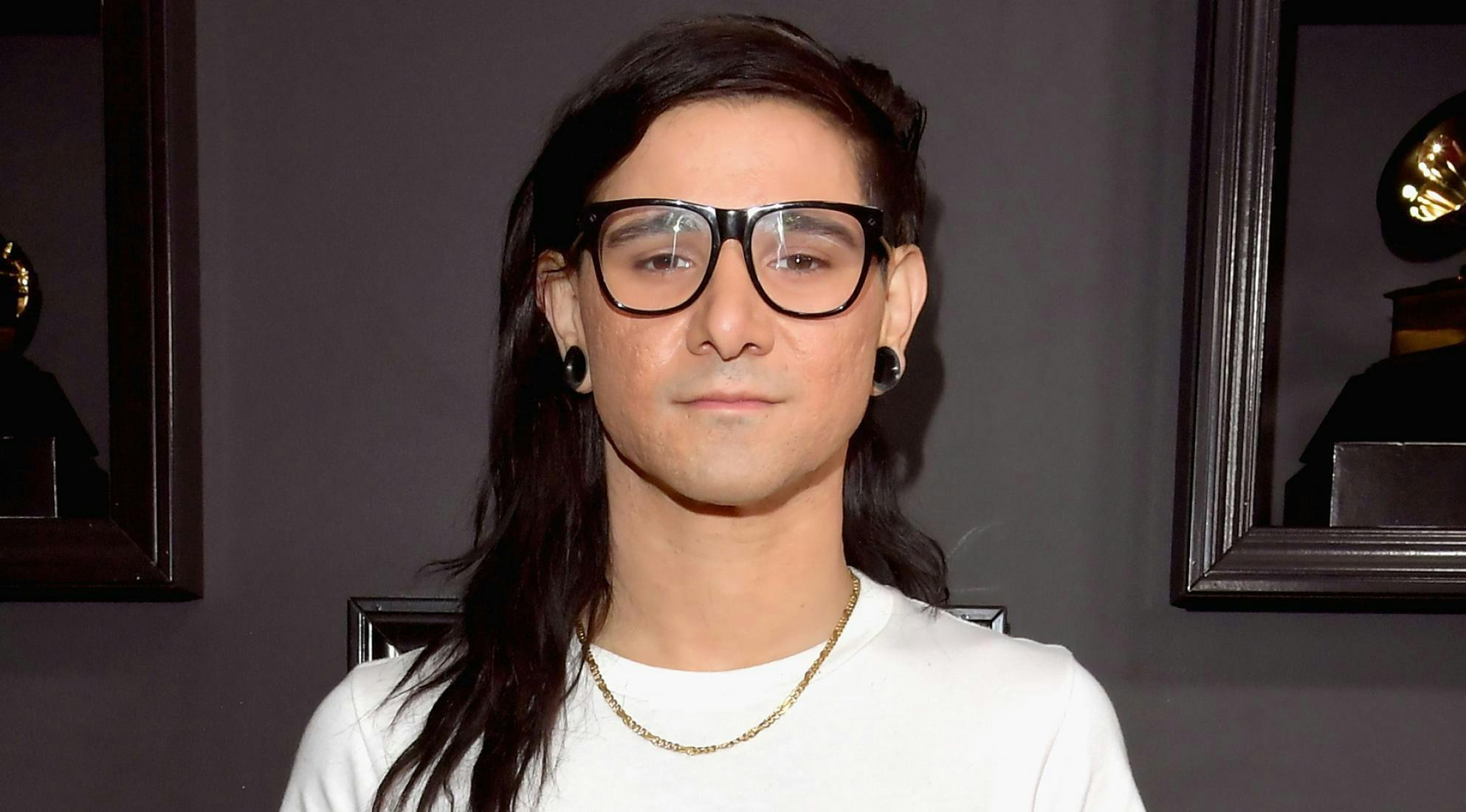
“After his sudden rise to fame, Skrillex found himself on tour most of the year. In order to continue producing while on the road, he created a portable studio to take with him on the tour bus.”
Biggest songs:
- “Scary Monsters and Nice Sprites”
- “Bangarang”
- “Where Are Ü Now” (with Diplo and Justin Bieber)
Headphones: Beats by Dre, Audio-Technica ATH-M50
Monitors: KRK Rokit 5 G3
Software: Native Instruments Massive, Native Instruments FM8
Skrillex is a Grammy award-winning producer, DJ, singer-songwriter and multi-instrumentalist from Los Angeles, California. Skrillex started his solo career in 2007 and found massive success with his second EP, Scary Monsters and Nice Sprites. Skrillex produced the album in his bedroom using a pair of KRK Rokit 5 G3 monitors. More accurately, he only used one, as right speaker was blown. Scary Monsters and Nice Sprites won a Grammy for Best Dance/Electronica Album in 2012.
After his sudden rise to fame, Skrillex found himself on tour most of the year. In order to continue producing while on the road, he created a portable studio to take with him on the tour bus.
“I’m always on tour so I’m always trying new tracks out live before they’re released. That’s more necessity than anything, because I don’t get a proper chance to sit in a studio and work on tracks like other producers do. I was only home for about four days in the second half of last year… I’ve got a MacBook Pro running Ableton Live with two little KRK monitors and a Focusrite Saffire Pro 14 interface.”
Richie Hawtin/Plastikman
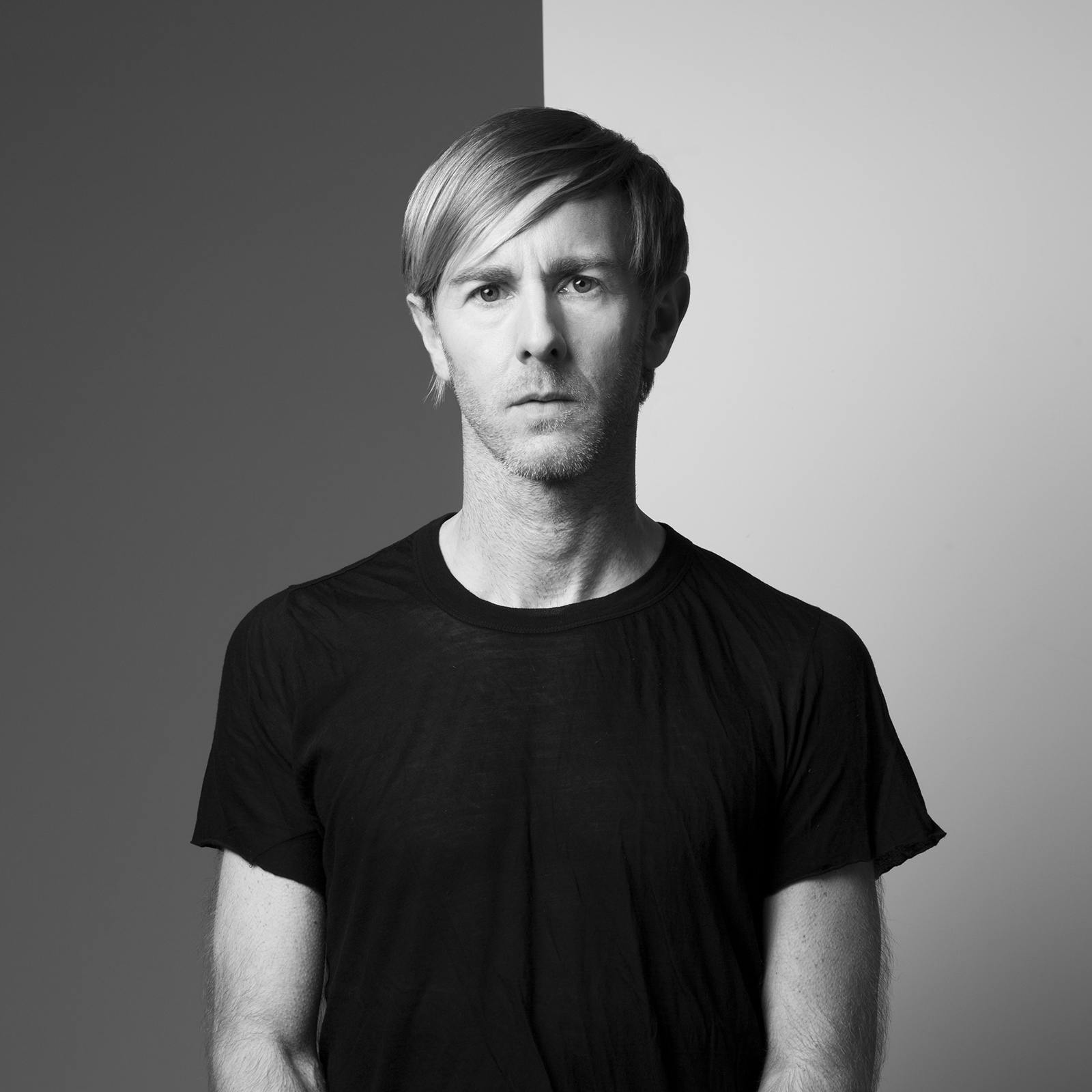
“Often credited with the revival of Detroit techno, Hawtin is the quintessential bedroom producer and an innovator of minimal techno.”
Biggest album: Closer (2003)
Headphones: Pioneer HDJ-2000 Headphones
Monitors: N/A
Software: Native Instruments FM8, Native Instrument Battery
Richie Hawtin, better know as Plastikman, is a three-time DJ Awards winning Canadian electronic musician. Often credited with the revival of Detroit techno, Hawtin is the quintessential bedroom producer and an innovator of minimal techno.
While Hawtin’s new studio in his Windsor, Ontario home is closer to the inside of a rocket than a bedroom studio, his iconic 2003 album Closer was produced with minimal gear in his New York apartment. Hawtin programmed the drums using a combination of his analog Roland TR-909 drum machine and Native Instruments Battery drum sampler. The synth sounds came from his Roland TB-303 Bass Line synth and Native Instruments FM8. Hawtin also incorporated his voice into the record with a pitched-down lo-fi effect, accompanied by atmospheric recordings captured with an old DAT recorder.
Nosaj Thing
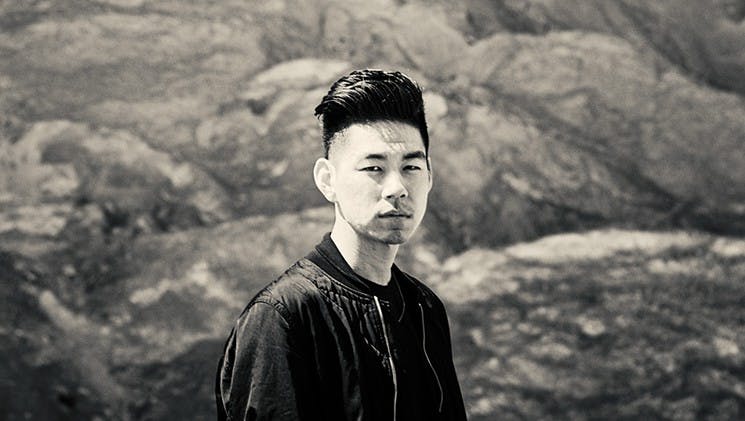
“I grew up making music in my bedroom. I’m kind of a homebody. I’m really sensitive to my environment. Even the acoustics of a room change my work.”
Biggest songs:
- “Man on the Moon”—Kid Cudi
- “Cloud 10”—Kendrick Lamar
- “Paranoia”—Chance the Rapper
Headphones: N/A
Monitors: Focal Twin6 Be
Software: Ableton Live
Nosaj Thing is an American record producer from Los Angeles who has produced tracks for award-winning artists like Kendrick Lamar, Kid Cudi and Chance the Rapper. Nosaj Thing got his start as a DJ in high school and began attracting recognition from up and coming artists after releasing his debut EP, Views/Octopus in 2006.
According to an interview he gave to Noisey in 2015 Nosaj Thing says the sound of his home studio is part of his creative process:
How To Make Your Home Studio Sound Professional
“I grew up making music in my bedroom. I’m kind of a homebody. I’m really sensitive to my environment. Even the acoustics of a room change my work.”
As a bedroom producer, you spend a lot of time in your bedroom. It’s your live room, your control room and your studio lounge. Oh, and it’s also your bedroom. After a while, you’ll get very good at making tracks sound good in your bedroom, but the trick is getting them to translate to other systems too. That’s where Sonarworks SoundID Reference comes in.
Every track in your mix passes through your monitors or headphones. They’re the only piece of gear that affects literally every sound you make. But high-end studio monitors are very expensive—and even the best monitors in the world will sound bad in an untreated room. With SoundID Reference you can calibrate any headphones or studio monitors to playback a perfectly neutral frequency response, allowing you to mix with confidence anywhere in the world.
Download your free trial today and see what a different calibrating your live room/control room/bedroom can make!

